
The Order of Friars Minor Capuchin is a religious order of Franciscan friars within the Catholic Church, one of Three "First Orders" that reformed from the Franciscan Friars Minor Observant, the other being the Conventuals. Franciscans reformed as Capuchins in 1525 with the purpose of regaining the original Habit (Tunic) of St.Francis of Assisi and also for returning to a stricter observance of the rule established by Francis of Assisi in 1209.

Padre Pio, also known as Saint Pius of Pietrelcina, was an Italian Franciscan Capuchin, friar, priest, stigmatist, and mystic, now venerated as a saint in the Catholic Church. Born Francesco Forgione, he was given the name of Pius when he joined the Order of Friars Minor Capuchin.
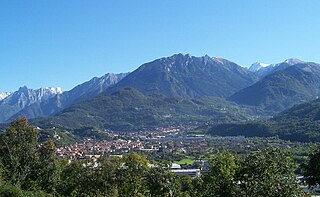
Berzo Inferiore is an Italian comune of 2,316 inhabitants in Val Camonica, province of Brescia, in Lombardy, northern Italy.

Lawrence of Brindisi, born Giulio Cesare Russo, was a Roman Catholic priest and a theologian as well as a member of the Order of Friars Minor Capuchin. An accomplished linguist, in addition to his native Italian, Lawrence could read and speak Latin, Hebrew, Greek, German, Bohemian, Spanish, and French fluently. Lawrence was ordained a priest at the age of 23. Lawrence was beatified on 1 June 1783 and canonized as a saint on 8 December 1881.

The Custody of the Holy Land is a custodian priory of the Order of Friars Minor in Jerusalem, founded as the Province of the Holy Land in 1217 by Saint Francis of Assisi, who had also founded the Franciscan Order in 1209. In 1342, the Franciscans were declared by two papal bulls as the official custodians of the Holy Places in the name of the Catholic Church.
Jeremiah of Wallachia O.F.M. Cap., was a Romanian-born Capuchin lay brother who spent his entire adult life serving as an infirmarian of the Order in Italy. He was beatified by Pope John Paul II on 30 October 1983, the first of his nation to be so honored. Born Ion Costist or Ioan (John) Costişte, he emigrated to Naples during his adolescence. Also known as Geremia from Wallachia, he became noted for his careful attention to the merciful works and to the care of the poor. His vision of the Blessed Mother resulted in one of the best known images created of him.

Bernard of Offida - born Domenico Peroni - was an Italian Roman Catholic professed religious from the Order of Friars Minor Capuchin from the Marche area. Peroni lived for the most part in servitude to his fellow friars in various capacities and he was noted for his strong Eucharistic dedication and for his holiness.
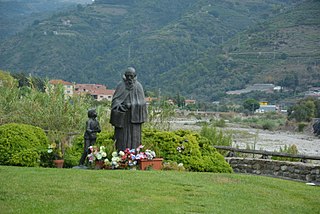
Francesco Maria da Camporosso - born Giovanni Croese - was an Italian Roman Catholic professed religious from the Order of Friars Minor Capuchin. Croese became a beggar in Genoa where he sought alms from people and was at first heckled and assaulted before his reputation for personal holiness spread which prompted people to come and see him.
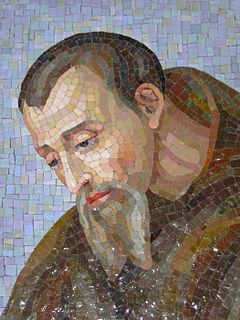
Tommaso da Olera - born Tommaso Acerbis - was a Roman Catholic Italian professed religious from the Order of Friars Minor Capuchin. Acerbis lived as a Franciscan beggar and as a religious who provided spiritual advice and consolation to a number of people that included Leopold V and his wife.

Leopoldo da Gaiche, born Giovanni Croci, was an Italian Roman Catholic priest and a professed member of the Order of Friars Minor who became well known for wearing a crown of thorns. He was a preacher who went from diocese to diocese and served in a position of power in the Franciscan order in the Umbrian region in which he pushed for strong adherence to the Rule of Saint Francis of Assisi. He has been called the "Apostle of Umbria".

Blessed Matteo da Gimara was an Italian Roman Catholic bishop and a professed member from the Order of Friars Minor; he served as the Bishop of Agrigento from 17 September 1442 until his resignation in mid-1445. He was forced to resign due to clerical opposition to his tenure and rumors spread against him forced this resignation. He was noted for his concern towards the poor as well as for his preaching abilities; he was known to have preached in various Italian cities and had support from Pope Eugene IV who was a benefactor. Matteo also preached across Spain on several occasions being close to the monarch before returning to the Italian peninsula to preach and assume his episcopal duties.
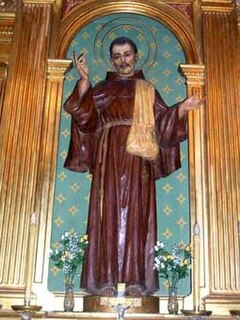
Miquel Baptista Gran Peris, known as Blessed Bonaventura Gran or Fra Bonaventura of Barcelona, was a Franciscan friar. He was proclaimed blessed by the Catholic Church in 1906.
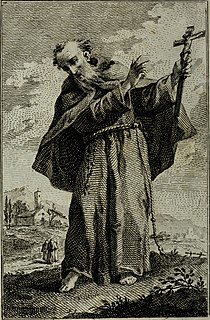
Luca Antonio Falcone – in religious life Angelo – was an Italian Roman Catholic priest and a professed member of the Franciscan Order of Friars Minor Capuchin in Cosenza. Falcone had a rough call to religious life after several entries and exits into the order and he later served as a noted preacher across southern Italian cities such as Catanzaro and Salerno after his first few sermons attracted little following. He became titled as both the "Angel of Peace" and the "Apostle of the South".
Giuseppe Antonio Migliavacca – in religious Arsenio da Trigolo – was an Italian Roman Catholic priest and a professed member from the Order of Friars Minor Capuchin. He had been a Jesuit for a period of time before he was forced to withdraw from the order due to a series of complications. Migliavacca founded the Suore di Maria Santissima Consolatrice in 1892 alongside a small group of women who desired to become nuns, but slanderous accusations made against him forced him to abandon it and pursue the Franciscan charism instead; he dealt with these humiliations in private but once a Franciscan became a preacher and confessor and aided the tertiaries of the Third Order of Saint Francis in Bergamo.
Francesco Saverio Toppi - born Vincenzo - was an Italian Catholic prelate and professed member from the Order of Friars Minor Capuchin who served as the Prelate of Pompei from 1990 until his resignation in 2001. Toppi fostered a deep devotion to the Blessed Mother and this devotion further developed and was solidified when he was appointed to oversee the Marian shrine in the Pompei prelature. He carried out his duties to the fullest as a teacher serving in Palermo and Naples prior to his episcopal appointment and served in various capacities of leadership for his order.

Antonio Pietro Cortinovis - in religious Cecilio Maria da Costa Serina - was an Italian Roman Catholic professed religious from the Order of Friars Minor Capuchin. He had set his heart on entering the religious life despite his initial reluctance due to him pondering on his unworthiness. This belief manifested in his childhood which motivated him to decide against entering the priesthood. But his religious formation in the order was pushed back due to World War I and he was unable to make his solemn religious profession until the war had concluded.
Isnardo da Chiampo was an Italian Roman Catholic priest and professed member in the Order of Preachers. He studied in Bologna and in Milan before preaching in northern Italian cities such as Brescia and Bergamo following his ordination. He settled in Pavia in 1231 where he founded a convent and would remain there preaching against heretics until his death over a decade later.
Hermínio Pinzetta - in religious Salvador from Casca - was a Brazilian Roman Catholic and a professed religious from the Order of Friars Minor Capuchin. He worked for three decades on his parents' farm where he helped them in the fields and aided in managing the livestock though in later life entered the religious life after a long period of discernment. He took up various tasks while in the convent at Flores da Cunha and worked there in roles such as a porter and beekeeper. Pinzetta was known among his colleagues and the people as a man who exhibited strong virtue with meekness and led to the Bishop of Caxias do Sul in 1970 granting him permission to give Communion to people and in 1971 asking him to promote pastoral initiatives for the sick.

Giuseppe Maria of Palermo, born Vincenzo Diliberto, was an Italian friar, belonging to the Order of Friars Minor Capuchin (OFMCap.), whose the process of beatification and canonization is currently underway. He is considered by the Catholic Church a Servant of God.
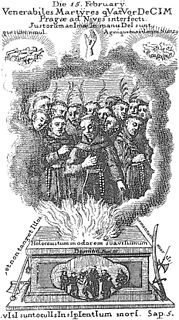
Bedřich Bachstein and his thirteen companions were a collective group of Roman Catholic priests and professed religious in the Order of Friars Minor. Four were Czech while there was one Spaniard, one Frenchman, four Italians, three Germans, and one Dutchman. Three were clerics in the order while another three were novices since the rest were all ordained priests. The Franciscans settled in Prague in 1604 and set out to administer the sacraments as well as to tend to the ill and the poor. The friars became known for their preaching despite the consistent threats levelled against them from those in non-Catholic denominations. The fourteen were slain in Prague after Emperor Rudolf II invaded Prague; the fourteen were surprised at the sudden attack on their convent at the Church of Our Lady of the Snows and were all slain at the hands of a Lutheran mob.















